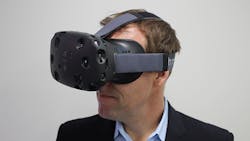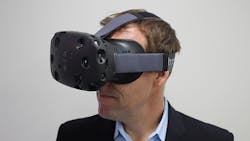Before I reveal my thoughts on these technologies, let me define “going nowhere.” By this I mean “not viral.” Or not “ubiquitous.” A technology that is clever and useful, but does not hit the major markets is what I consider a niche. “Going nowhere” in my view is something that does well in a limited way, but is not as mainstream like the smartphone. Some technologies that are definitely going somewhere in the mainstream are robots, drones, artificial intelligence and soon to come, the Internet of Things (IoT). And don’t forget, this is my opinion—but based on years of observation and editorial coverage. Even so, I could be wrong.
1. 3D and 4K/8K TV. 3D TV came and went pretty fast. The thought was that if we have 3D movies, why not 3D TV? It seemed like a good idea at the time. The technology was marginally good and in some systems you had to wear the special glasses. And, oh by the way, where is all that good 3D content? Maybe a curved screen would help. If not 3D how about higher resolution? Most modern folks have a 1080 screen these days, which we call high-definition (HD). Now you can get 4K and 8K HD screens. Ultra High Definition (UHD). Lots of pixels. And super high prices. I have compared 1080 and 4K screens side by side and I cannot tell much difference. Maybe that’s just me. Or the nature of the content. Where is the 4K HD content anyway? And who can afford the prices? Is the Internet even fast enough and robust enough to stream 4K movies even in compressed form? And what about that new technology that improves brightness, contrast and dynamic range? The processing power is certainly available. We certainly have the technology, but 4K/8K TVs are just not practical and affordable enough to make them mainstream.
2. High-resolution audio. Digital audio continues to evolve. Standard CD audio is recorded with two channels of 16 bits at a 44.1 kHz or 48 kHz sampling rate. The upper frequency limit is 20 kHz. Overall, the sound is pretty good. Now we can record and distribute 24-bit audio at a 96-kHz or 192-kHz sampling rate. The good news is that with 24-bits the dynamic range is better and the sampling rate allows the capture of higher frequencies and harmonics. The bad news is that the storage requirements are massively higher, like about x6. The final downside is, who can truthfully hear any difference? Some say it is not even as good as 16/44.1 audio. Maybe by comparing the same music using the same speakers in the same acoustic environment, someone with a trained ear could tell. Perhaps that person who claims to be able to detect the sound difference that occurs when the speaker cable size is increased and gold connectors are used can tell. Again we have the technology, but it just is not practical or recognizably better.
3. Virtual reality (VR). We have been hearing about VR for literally decades. Every now and then, there is a resurgence of interest as new technological developments come along. Then there is the variant called augmented reality (AR). Right now there is lots of new development activity going on. But I doubt it will ever be mainstream. If so, tell me how. Think about the impractical bulky headset display and the hand sensors and the cables. (OK, so it could be made wireless.) The whole experience is weird. The only time I tried it I got dizzy. It will be great for games and certain types of entertainment but what else? Some are saying that VR will also facilitate certain types or maintenance, repair, assembly, installation or calibration tasks. Maybe so, but that is not main stream. As 3D and high res displays, new and better sensors have improved so has VR and its potential. My congratulations to Facebook’s Oculus Rift, Microsoft’s Hololens, Google’s Cardboard, Samsungs’ Gear and Sony’s Morpheus for their continued development in this niche.
4. 3D Printing. Here is another technology that has been around for a couple of decades. I saw my first 3D printer in 1998. Significant developments have occurred since and the technology is better than ever. Now the whole movement seems to be stalled. 3D printers are great for making prototypes and limited quantities of small objects, but that seems to be it. There have been hopes for 3D printers in manufacturing but so far they cannot beat metal cutting and plastic injection molding machines. Some say there is hope for food processing. And what in the world do you do with a home 3D printer? Anyway, 3D printers are still expensive and slow. With ongoing development there could be a break through. Until then it is a clever niche.
5. Wearables. I am going out on a limb here and saying that wearables are and will be just a niche, too. I call this category “contrived.” The Google Glass was a flop. Goofy and scary. And smartwatches. The Apple Watch has not been that big a success. I still have yet to see a person wearing one even in my high-tech town of Austin, Texas. Although I have seen a few Fitbits around capturing massive amounts of performance data that will probably never get used or analyzed. Prices are still high and functionality is minimal unless you just can’t bear the thought of taking your smartphone out of your pocket or purse. I doubt that I will ever buy a wearable. How about you?
So that’s my list. All are great technologies, but with somewhat limited application. I started to include NFC and wireless pay systems. That whole “digital wallet” movement has been developing for years. It is here, but I have wondered if it would be mainstream. I have not seen anyone use it yet. There was a real resurgence in use with the introduction of Apple Pay so there is hope. Google’s Android Pay is also in play. Samsung is also introducing its Samsung Pay system with its new Galaxy Note 5 and S6 Edge. Now some of the major retailers like Walmart, Target and Darden Restaurants are starting to test it so there is hope that it will someday be mainstream thanks to the ubiquitous smartphone.
I also started to include driverless cars. I still think they are a bad idea, but we will no doubt get them anyway. But I view them as a niche. My take is that they will be like electric cars that have also gone nowhere.
I am sure I left something out. What do you say?
About the Author

Lou Frenzel Blog
Communications Technology
Click here to find more of Lou's articles on Electronic Design.

